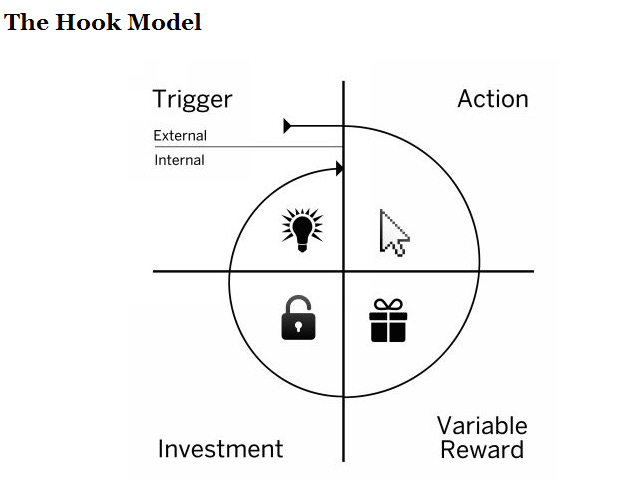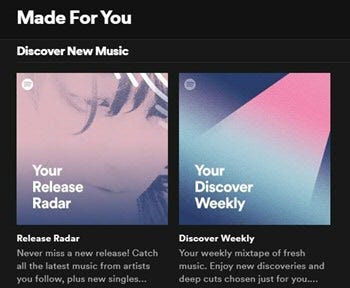#14 Spotify: Music-as-an-algorithm
Spotify is a great story on how to build a successful subscriptions business driven by data science. The core part of Spotify’s success is driven by it’s machine learning models that empower recommendations and personalisation, as well as its product and engineering culture.
Today, we dive into both the aspects :) - be geared for some really interesting learnings on product, design and engineering through this case study #14 on Productify.
Spotify : The Backstory
In 2006, Spotify started as a small startup in Stockholm (Sweden) to solve for the growing problem of piracy in the music industry. Before 2016, the industry was losing billions of dollars as listeners could just listen to their favourite song on Napster, Pirate Bay etc without paying for it.
The founders realised that there was a need to solve the problem for listeners (Access to music with a better experience than pirated websites) and for musicians ( to compensate them for their hard work)
Two years down the line, Spotify launched its subscription service where users could listen to music for free but had to pay monthly for an ads-free experience.
But Spotify had a mammoth task ahead
Spotify had to find ways to ensure users continue to find value in the platform (basically true for any subscriptions service) so that they would want to switch to ads-free experience by becoming premium users OR for existing premium users to continue to happily pay the monthly fee to the platform.
Here, the hooked model by Nir Eyal fits for the explanation:
Users had both internal and external triggers to listen to music (could be because of their own mood or because of a recommendation of music from friend or an app) - hence having good selection of music would solve for the acquisition of users.
Action (where users interact with the app - such as playing a song, pausing a song, changing to a song) and Variable Reward (expecting something new and relevant everytime they open the app) was the missing piece where Spotify had to invest a lot. You cannot expect users to search and discover the music they like on their own - Spotify had to step in with a strong recommendation system that works.
Enters the BaRT System for recommendations
…stands for Bandits for Recommendations as Treatments and has two elements to it: Exploitation and Exploration.
Exploitation Model: Recommend songs, albums and playlists based on past user behaviour and data with an aim of maximising customer lifetime value. Some of the data points that go into the exploitation model include
Songs searched for
Artists searched for
Songs fully listened to
Songs skipped/not listened to
Playlists interacted with
History of songs listened to
Based on this, Spotify would understand which type of songs have more likeliness for the user to hear them and like them. This could work for existing users that have spent time on the platform. But the exploitation model fails to recommend relevant content to new users.
Enter the exploration model. This model aims to recommend content to an user on which there is no data. When you first install Spotify and create an account, the exploration models asks you to choose three artists you like listening to - and based on this information the exploration model kicks in. The model also recommends based on what’s popular right now in your part of the world and also globally.
Eventually once you start interacting with the recommendations, exploration model matures and exploitation model kicks in once they enough listening history on you.
Source of image: TowardsDatScience.com
The 30 second rule is at the center of decision making to know whether listener likes the song or not. The BaRT algo classifies a recommendation as good recommendation if listener doesn’t stop the song before 30 seconds but if the user skips the song or stops listening to it before 30 seconds, the algo will not recommend similar or same songs next time.
Evolution of Machine Learning (ML) for predicting future tastes
Spotify’s engineering blog brought up an interesting element for utilising data science for personalisation. It claims that Machine learning is what drives personalization on Spotify.
The team treats every single user as a separate app (400M+ users = 400+ app experiences). Each user account has different pages, playlists and tracks being recommended. This is driven by the machine learning model that uses all kinds of historical user data (> 500 Billion data points a day are processed) while keeping trust and responsibility at the top of mind.
It is not only user behaviour data but also other “ambience” factors like : Is the recommendation for working or chilling out? Is the user on desktop (hence might be working) vs on mobile (could be chilling or on the move)? Using these data points, Spotify is able to recommend very closely what you would like listening to right now.
While ML optimises to predict what is the real-time most fit recommendation for the user, it doesn’t predict for what might the user want in the future. That is where Reinforcement Learning (RL) - a model of ML comes into play.
RL tries to predict what user might want a day from now, week from now and so on - hence optimising for customer’s overall lifetime value and ensuring the content is not only relevant today but continues to be relevant in the future. This means doing predictions (called simulations of what is possible in future) and then running the RL against those simulations.
If you’re interested to know the full story behind ML’s evolution at Spotify, you can listen to Oskar Stal, VP Personalisation here:
Matching the User Experience to Recommendations
Even if algorithms for recommendations work well, the product and design teams still have to solve for easy discovery of content. If the UI sucks at discovery, recommendations will fail.
Recently in Aug 2022, Spotify announced it will split the Home feeds into : Music and another one for Podcasts & Shows:
(Source of image and quote)
This week, we are launching a new Home experience that includes feeds for both Music and Podcasts & Shows. The feature is currently rolling out to Android users and will soon be available on iOS. By creating these feeds, Spotify will help listeners to easily scroll through the type of content they’re looking for at that moment. The updated interface will make the experience more personalized while allowing users to dig even deeper into their recommendations.
In the Music feed, listeners will have quick access to suggestions based on their music taste, making discovering new favorites easier than ever. There will also be album and playlist recommendations as well as buttons that make it easy to share, like, and instantly play music.
In the Podcast & Shows feed, listeners will be able to head straight to new episodes of their favorite shows. They’ll also find personalized podcast recommendations. What’s more, listeners will be able to read episode descriptions, save to Your Episodes or start playing podcasts without leaving the page, so the experience all starts from one place.
UI and Copywriting for easier discovery
If you’re a Spotify user, you might have already come across terms like ‘Your Discover Weekly’, ‘Recommended for you’, ‘Uniquely yours’ that shine on the homepage of the app.
Then, Spotify also goes one step ahead to do more catchy copywriting like ‘Fans Also Like’, which basically recommends you artists that resemble the music you already enjoy. It is like being in company of fans of a particular music type you like without ever meeting them physically.
Have thoughts in your head and want to share? Consider leaving a comment on this case study:
Spotify’s product and engineering culture
If you are working in a tech-driven product company - you might have already come across terms like “Squads” “Tribes” “Autonomous teams” “loosely coupled, tightly aligned squads” - a lot of the science and success behind structuring of product and engineering teams in this way comes from Spotify’s engineering culture.
You can find a really detailed account of how teams work at Spotify through the two-part youtube videos linked below. But in essence if I have to summarise the engineering culture, it will be:
Small frequent and decoupled releases
Releasing controlled by squads
Culture of fail fast, learn fast, improve fast
Limited blast radius → reduce the impact of something going wrong
Innovation over predictability; value delivery over plan fulfillment
Part 1:
Part 2:
So, how is Spotify’s monetisation strategy coming along?
To close this case study, let us look at some key numbers:
As of Dec 2021, Spotify had 406M monthly active users , out of which 180M were Premium Subscribers (just below 50%)
Spotify earns revenues from two streams: premium subscribes and advertisements to free users. Premium subscribers are higher margin than advertisement revenue.
Spotify pays record labels close to 52% of the revenue generated by each stream.
Sony, Universal, Warner, and Merlin. accounts for 85% of music streamed on Spotify
As of 2018 data, Spotify paid €3.5 billion in royalties for premium users and €0.5 billion for free users, which equates to 74% of overall costs
In the first half year of 2019, Spotify’s premium subscriber churn rate fell to a record low of 4.6%
What’s for future?
Spotify might venture into audiobooks as a dedicated content category. In June 2022, Spotify officially announced its investment in Audiobooks.
Spotify also acquired Heardle in July 2022. It allows you to discover new songs and tracks as part of the gaming experience.
In total, Spotify has made around 27 acquisitions till date around Radio Tech, Music Tech, Social Platforms and more.
Did you enjoy this case study? Do add comments below, or share Productify newsletter with your friends:









Yeah, it will "stay free" UNLESS it becomes very popular. If it does, spotify will make it that you have to PAY to use it.
These "players" are worse than your local crack dealer. Give it away, get em hooked, then start charging them.
https://fornewspro.com/spotify-acquired-heardle-the-wordle-inspired-music-guessing-game/
Awasome. There is so much to learn from it. I don't even know what you need to do to end up with so deep, extensive research.
I just recommended Productify here: https://huryn.substack.com/